Laparoscopic Mini Gastric Bypass (MGB) or Single Anastomosis Gastric Bypass (SAGB)
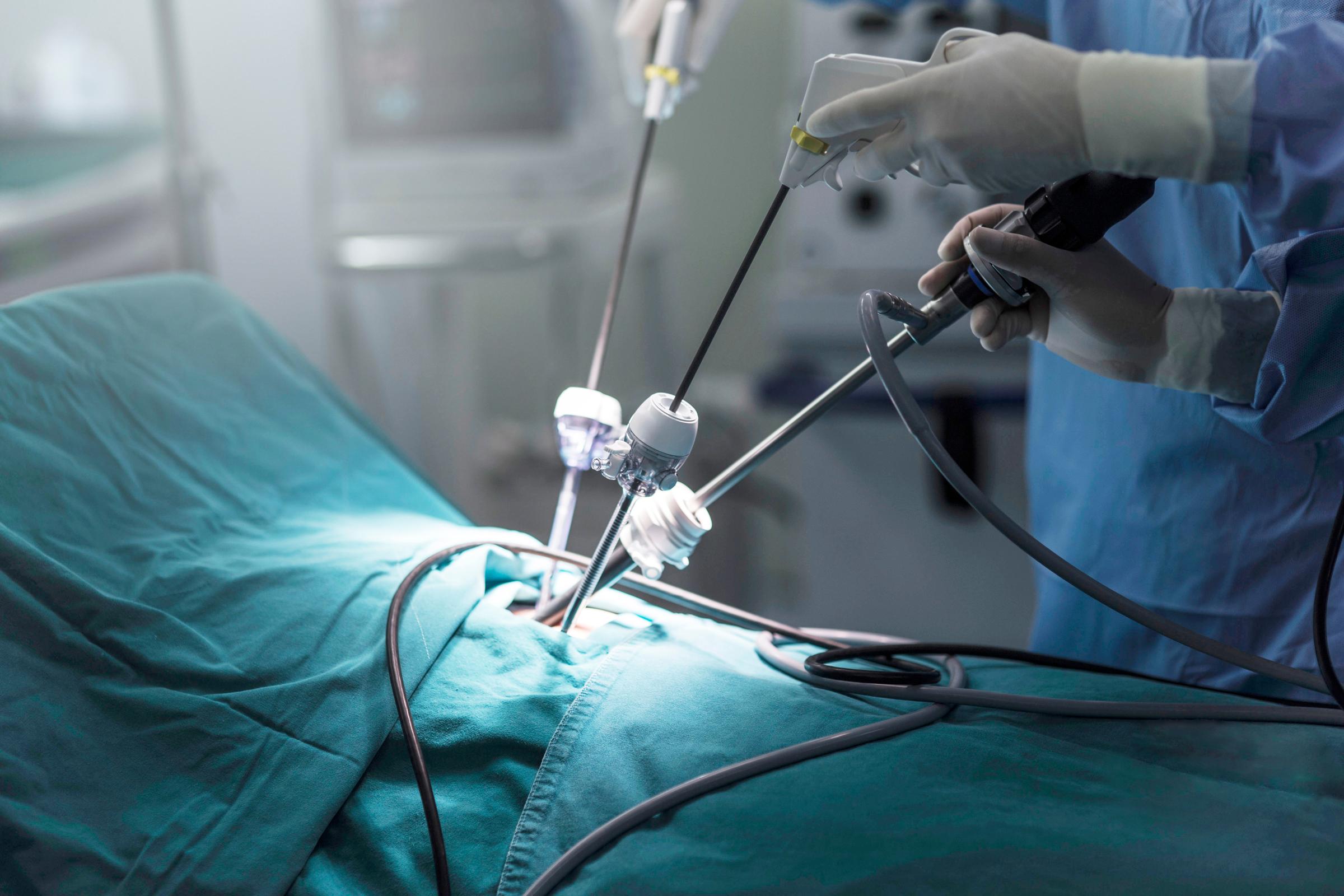
“When you feel like quitting, think about why you started.”
Morbid Obesity or clinically severe Obesity has emerged as one of the most dreaded diseases of this century. People who have attempted to lose weight, know how difficult it is to not only lose weight but also to maintain the weight loss. Daily, we see patients who put their heart and soul into their efforts to lose weight. They have been to every weight loss clinic, celebrity dietician, gym, yoga guru and weight loss retreat. Unfortunately, more often than not, they meet with disappointment and tend to yo-yo between weight loss and weight gain. This entire process is extremely disheartening and demotivating for the patients.
So, if you have tried hard to lose weight without success and the weight is bearing you down, you have come to the right place because Bariatric Surgery is the only way at the moment that can lead to sustained weight loss in morbidly obese patients.
Laparoscopic Mini Gastric Bypass (MGB) or Single Anastomosis Gastric Bypass (SAGB)
Laparoscopic MGB/SAGB is becoming one of the most popular weight loss Bariatric procedures in India. It is a technically easier procedure to perform and has good results for super-obese patients.
Am I the right candidate for undergoing Laparoscopic Roux-en Y Gastric Bypass
The IFSO - APC (International Federation for Surgery for Obesity and Metabolic Disorders - Asia Pacific Chapter) guidelines for weight loss surgery are as under:
- Bariatric Surgery/Obesity Surgery/Weight Loss Surgery must be considered for the treatment of Obesity for acceptable Asian candidates with BMI ≥ 35 Kg/m2 with or without any associated diseases.
- Bariatric Surgery/Metabolic Surgery must be considered for the treatment of Type 2 Diabetes or Metabolic Syndrome for patients who are inadequately controlled by lifestyle alterations and medical treatment for acceptable Asian candidates with BMI ≥ 30 Kg/m2.
- Bariatric Surgery/metabolic surgery may also be considered as a non-primary alternative to treat inadequately controlled Type 2 Diabetes or Metabolic Syndrome for suitable Asian candidates with BMI ≥ 27.5 Kg/m2.
Laparoscopic MGB/SAGB has particularly good results for Obese patients suffering from Type 2 Diabetes, High Cholesterol etc. It has also shown good results for Obese patients as a One-stage surgery.
How is it done?
- As the name suggests, this surgery is performed by Laparoscopic technique. In this technique, 4 to 5 tiny 0.5 to 1 cm cuts are made on your tummy and the entire surgery is performed using a camera and instruments. This is minimally invasive and there is no big cut like the surgeries of the past. All the stitches are absorbable and no sutures are to be removed later. Laparoscopy enables the patient to have less pain, recover faster and return to work much earlier. Most patients are discharged from the hospital one day after their operation. Of course, this depends on their clinical status as well.
- During the surgery, a longitudinal pouch of the Stomach is created using surgical staplers. A 150 cm loop of the Small Intestine called the Jejunum is re-routed and attached to this pouch. In this surgery, a major part of the Stomach, the first part of the Intestine called the Duodenum and some length of the second part of the Small Intestine called the Jejunum is bypassed.
- This surgery is more mal-absorptive than Roux-en-Y Gastric Bypass and one has to be careful about nutritional supplementation and protein intake.
How does it lead to weight loss
The following mechanisms lead to weight loss after Laparoscopic MGB/SAGB.
- A narrow longitudinal Stomach pouch restricts the amount of food that a person can eat. There is significant caloric restriction after this surgery.
- The re-routing of Intestines causes malabsorption. This means that some part of the food that a patient consumes, will not be absorbed by the body.
- After this surgery, certain Intestinal hormones are activated and these aid in weight loss as well as remission of co-morbidities such as Type 2 Diabetes etc.
- There are many other mechanisms and yet unidentified roles of bile acids and gut flora that may help in weight loss and remission of co-morbidities after this surgery.
Results of Laparoscopic MGB/SAGB
- Patients lose up to 70 to 80% of their excess weight throughout 12 to 18 months after this surgery. This can be better if the patient embraces lifestyle modification and follows a strict diet and exercise program as guided by the Bariatric Surgery team.
- This surgery also leads to a significant improvement in associated diseases such as Type 2 Diabetes, High Blood Pressure, high cholesterol, Heart Disease, risk of venous Thromboembolism, Gout and so on.
Long-term weight loss goals
- Bariatric Surgery must not be perceived as a shortcut to weight loss. The patient and the doctor work as a team to achieve the best results in the long term. It is extremely important to be diligent with your follow-up to get optimum results.
- Long-term weight loss goals can be achieved with the help of a team that consists of a doctor, an Endocrinologist, a Nutritionist and a Psychologist. This support team of experts will keep you motivated, provide advice and help you to work through weight loss barriers.
Who is not eligible for weight loss surgery
- Pregnant women
- Patients with severe Psychiatric Disorders
- Smokers
- Patients with an inability to take nutritional supplements and protein.
- Patients who are medically unfit for surgery and Anaesthesia
Complications
- Laparoscopic MGB/SAGB Surgery is as safe as any other surgery like a Knee Replacement or Gall Bladder Surgery. The complication rate is much lower than Cancer surgery or surgery for the Oesophagus, Valve Replacement etc.
- It is important to follow the protocols set by the team and to take nutritional supplements as advised. Failure to do so may result in nutritional deficiencies in future.
- Smokers must strictly stop smoking. Smoking can lead to complications that can be life-threatening. If you are not confident about giving up smoking after this surgery, our advice is that you must not undergo the surgery at all.
- The team will discuss the pros and cons in detail with you during your consultation.
Dr Aparna Govil Bhasker believes in quality care and will make it extremely safe for you. You will be in good hands so do not worry. The biggest plus of coming to us for your surgery is our personalized care. Every patient is a VIP for us and we assure you that your smallest queries will be addressed at the earliest.
The patient needs to be mentally prepared and in a positive frame of mind before undergoing any kind of surgery. Positive thoughts go a long way in getting good results after surgery. So, be positive and we wish you all the best for your weight loss journey to being a different you.
Laparoscopic Intragastric Balloon Insertion
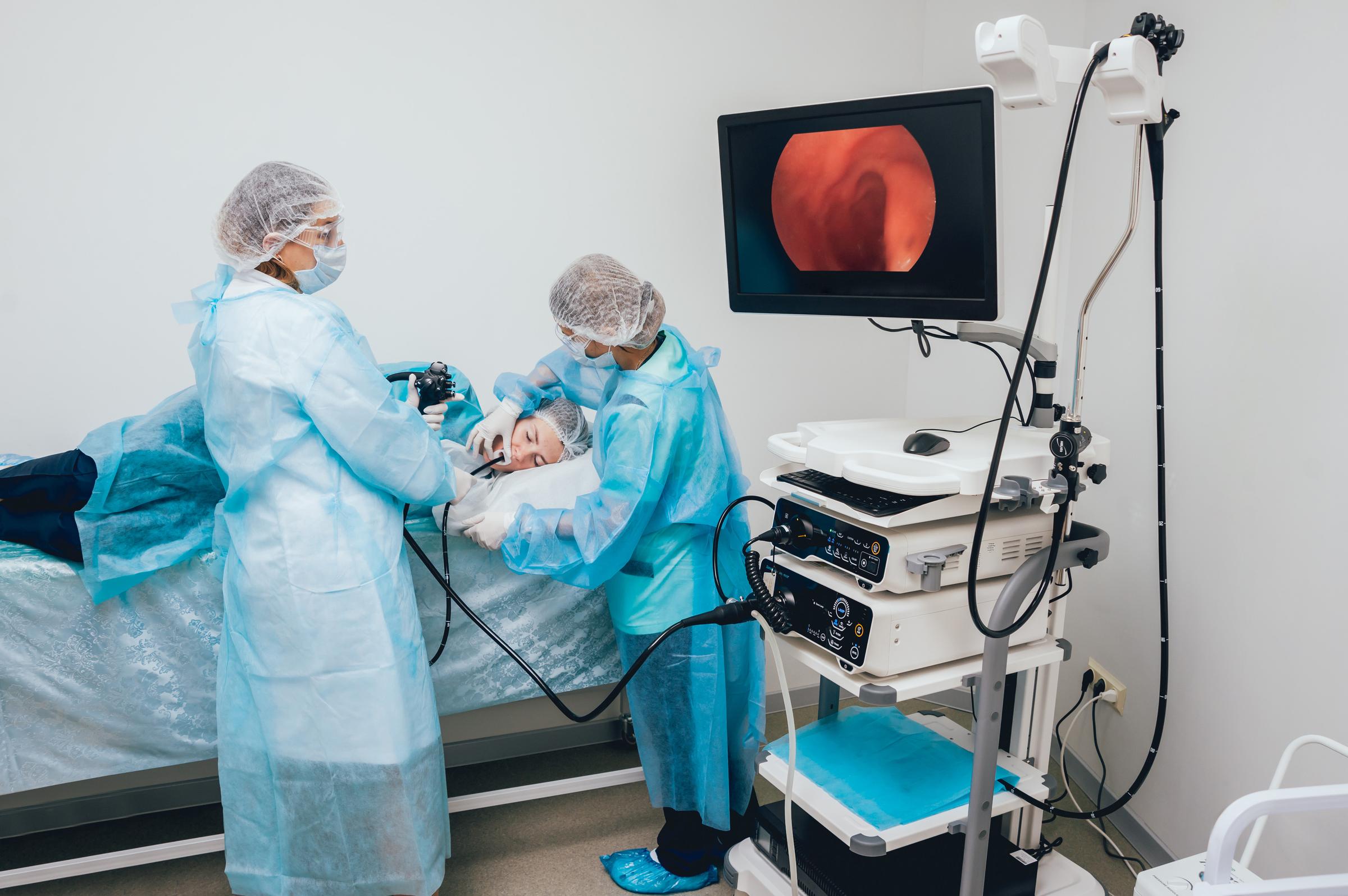
“When you feel like quitting, think about why you started.”
Morbid Obesity or clinically severe Obesity has emerged as one of the most dreaded diseases of this century. People who have attempted to lose weight, know how difficult it is to not only lose weight but also to maintain the weight loss. Daily, we see patients who put their heart and soul into their efforts to lose weight. They have been to every weight loss clinic, celebrity Dietician, gym, yoga guru and weight loss retreat. Unfortunately, more often than not, they meet with disappointment and tend to yo-yo between weight loss and weight gain. This entire process is extremely disheartening and demotivating.
So, if you have tried hard to lose weight without success and the resistant weight is bearing you down, you have come to the right place because an Intragastric Balloon is a good way at the moment that can lead to significant weight loss.
Laparoscopic Intragastric Balloon Insertion
Laparoscopic Intragastric Balloon Insertion is a weight loss aid for adults suffering from Obesity.
It is useful for patients who have tried other weight loss programs like diet, exercise, behaviour modification etc. but have failed to lose weight. It is also useful for patients who are super-super obese and are at high risk for Anaesthesia. In such patients, a balloon can be inserted as a first stage to make the patient lose some degree of weight and make them fit for subsequent surgery.
It can also be used as a weight loss aid in patients who are very high-risk and medically unfit for surgery.
Am I the right candidate for undergoing Intragastric Balloon Insertion
The IFSO- APC (International Federation for Surgery for Obesity and Metabolic Disorders - Asia Pacific Chapter) guidelines for weight loss surgery are as under:
- Bariatric Surgery/Obesity Surgery/Weight loss Surgery must be considered for the treatment of Obesity for acceptable Asian candidates with BMI ≥ 35 Kg/m2 with or without any associated diseases.
- Bariatric Surgery/Metabolic Surgery must be considered for the treatment of Type 2 Diabetes or Metabolic Syndrome for patients who are inadequately controlled by lifestyle alterations and medical treatment for acceptable Asian candidates with BMI ≥ 30 Kg/m2.
- Bariatric Surgery/Metabolic Surgery may also be considered as a non-primary alternative to treat inadequately controlled Type 2 Diabetes or Metabolic Syndrome for suitable Asian candidates with BMI ≥ 27.5 Kg/m2.
How is it done?
- Intragastric Balloon Insertion is performed as an outpatient procedure in the Endoscopy Department.
- This procedure is performed under mild Anaesthesia. First, an Upper GI Endoscopy is performed and the Stomach and Food Pipe are inspected for any abnormalities such as Ulcers etc.
- The balloon is then inserted and inflated with fluid.
How does it lead to weight loss?
The following mechanisms lead to weight loss after Laparoscopic Adjustable Gastric Banding.
- Intragastric Balloon Insertion is primarily a restrictive procedure. The balloon occupies space in the Stomach and limits food intake. It also causes early satiety. Patients feel full despite eating smaller quantities of food.
- The Intragastric Balloon can be kept in situ for a period of 6 months to a year depending on the type of balloon used.
- Some balloons also have the facility for subsequent adjustment as per the weight loss.
Results of Intragastric Balloon Insertion
- Patients lose significant weight after this procedure. Results are better if the patient embraces lifestyle modification and follows a strict diet and exercise program as guided by the Bariatric Surgery team.
- This procedure also leads to a significant improvement in associated diseases such as Type 2 Diabetes, High Blood Pressure, risk of Heart Disease, risk of Venous Thromboembolism, Gout and so on.
Long-term weight loss goals
- Bariatric procedures must not be perceived as a shortcut to weight loss. The patient and the doctor work as a team to achieve the best results in the long term. It is extremely important to be diligent with your follow-up to get optimum results.
- Long-term weight loss goals can be achieved with the help of a team that consists of a doctor, an Endocrinologist, a Nutritionist and a Psychologist. This support team of experts will keep you motivated, provide advice and help you to work through weight loss barriers.
Who is not eligible for weight loss surgery
- Pregnant women
- Patient with Acid Reflux Disease and Hiatus Hernia
- Patient with Gastric Outlet Obstruction
- Patients with severe Psychiatric Disorders
- Smokers
Downsides
- This is a reversible procedure and there is a tendency to gain weight once the balloon is removed.
- It is important to follow the protocols set by the team and to take nutritional supplements as advised. Failure to do so may result in nutritional deficiencies in future.
- Smokers must strictly stop smoking. Smoking can lead to complications that can be life-threatening. If you are not confident about giving up smoking after this surgery, our advice is that you must not undergo the surgery at all.
- Rarely does the balloon leak inside your Stomach and in that case, you will start passing blue-colored urine. In such a situation you must visit your doctor immediately and schedule a balloon removal.
- The team will discuss the pros and cons in detail with you during your consultation.
Dr Aparna Govil Bhasker has been practising bariatric surgery for over a decade now and has significant experience with Intragastric balloon insertion. The biggest plus of coming to us for your procedure is our personalized care. Every patient is a VIP for us and we assure you that your smallest queries will be addressed at the earliest.
The patient needs to be mentally prepared and in a positive frame of mind before undergoing any kind of surgery. Positive thoughts go a long way in getting good results after surgery. So, be positive and we wish you all the best for your weight loss journey to being a different you.
Laparoscopic Adjustable Gastric Banding
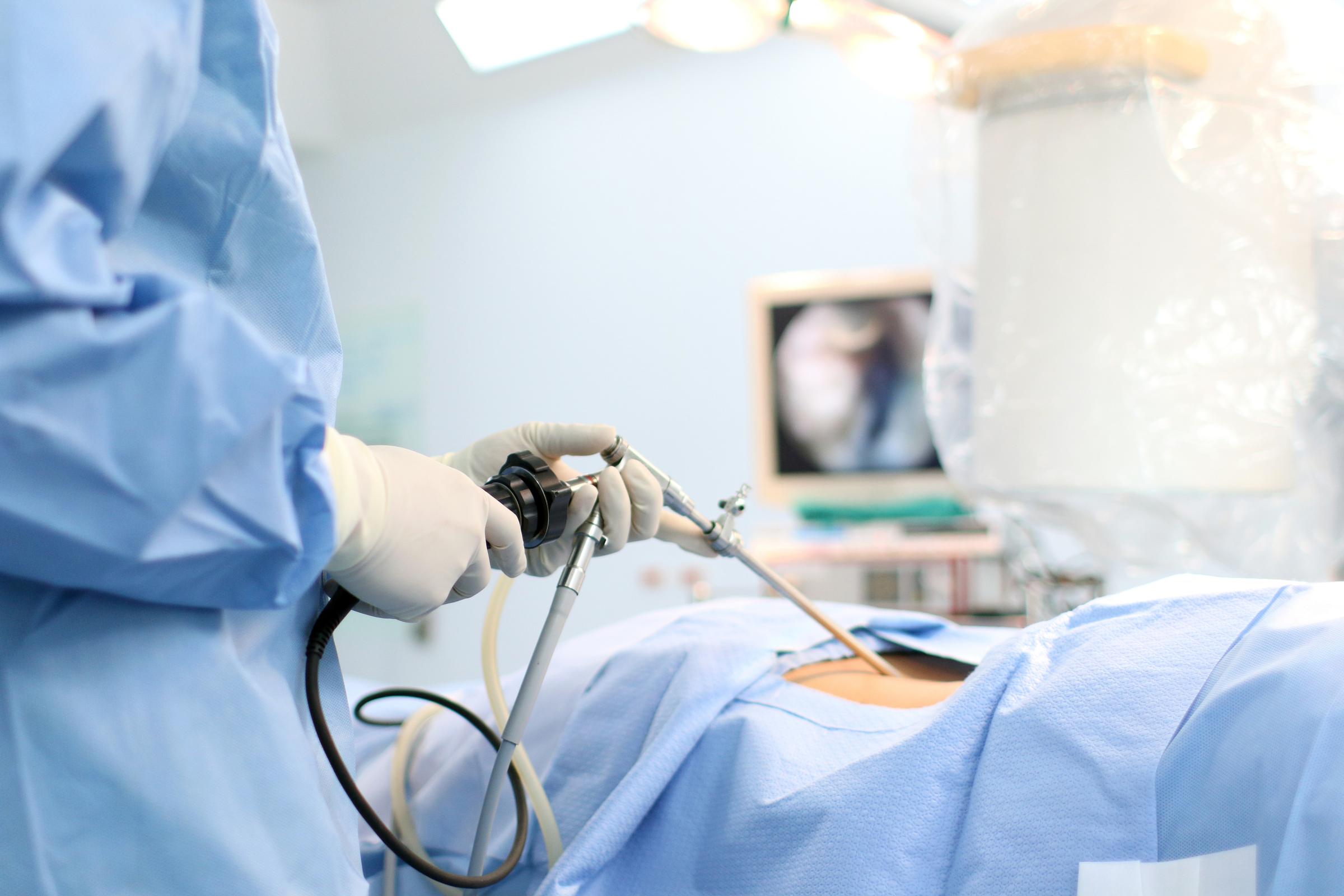
“When you feel like quitting, think about why you started.”
Morbid Obesity or Clinically Severe Obesity has emerged as one of the most dreaded diseases of this century. People who have attempted to lose weight, know how difficult it is to not only lose weight but also to maintain the weight loss. On a daily basis, we see patients who put their heart and soul into their efforts to lose weight. They have been to every weight loss clinic, celebrity Dieticians, gyms, yoga gurus and weight loss retreats. Unfortunately, more often than not, they meet with disappointment and tend to yo-yo between weight loss and weight gain. This entire process is extremely disheartening and demotivating.
So, if you have tried hard to lose weight without success and the weight is bearing you down, you have come to the right place because Bariatric Surgery is the only way at the moment that can lead to sustained weight loss in Morbidly Obese patients.
Laparoscopic Adjustable Gastric Banding
Laparoscopic Adjustable Gastric Banding was one of the most popular Weight Loss Bariatric Procedures till about a decade ago. Unfortunately, it did not yield very good results in terms of weight-loss outcomes and went out of favour, especially in India. In the last 10 years, more bands have been removed than those that have been inserted.
Yet it still has its place in the treatment of Obesity for young adolescents. One of the biggest advantages of Adjustable Gastric Banding is that it does not lead to any permanent change in anatomy and is fully reversible.
Am I the right candidate for undergoing Laparoscopic Adjustable Gastric Banding
The IFSO- APC (International Federation for Surgery for Obesity and Metabolic Disorders - Asia Pacific Chapter) guidelines for weight loss surgery are as under:
- Bariatric Surgery/Obesity Surgery/Weight loss Surgery must be considered for the treatment of Obesity for acceptable Asian candidates with BMI ≥ 35 Kg/m2 with or without any associated diseases.
- Bariatric Surgery/Metabolic Surgery must be considered for the treatment of Type 2 Diabetes or Metabolic Syndrome for patients who are inadequately controlled by lifestyle alterations and medical treatment for acceptable Asian candidates with BMI ≥ 30 Kg/m2.
- Bariatric Surgery/Metabolic Surgery may also be considered as a non-primary alternative to treat inadequately controlled Type 2 Diabetes or Metabolic Syndrome for suitable Asian candidates with BMI ≥ 27.5 Kg/m2.
Laparoscopic Adjustable Gastric Banding has its place in the treatment of Adolescent Obesity. There is no permanent alteration in anatomy and it is fully reversible. It gives them a decent chance at weight loss. At a later stage, it can be easily converted to another weight loss surgery such as Roux-en-Y Gastric Bypass or Sleeve Gastrectomy.
How is it done?
- As the name suggests, this surgery is performed by Laparoscopic technique. In this technique, 4 to 5 tiny 0.5 to 1 cm cuts are made on your tummy and the entire surgery is performed using a camera and instruments. This is minimally invasive and there is no big cut like the surgeries of the past. All the stitches are absorbable and no sutures are to be removed later. Laparoscopy enables the patient to have less pain, recover faster and return to work much earlier. Most patients are discharged from the hospital one day after their operation. Of course, this depends on their clinical status as well.
- During the surgery, a silicon band is placed around the Stomach, dividing it into a smaller upper pouch and a larger greater pouch. The band is attached to a connecting tube and adjustment port which is fixed under the skin. Through this port, distilled water can be injected into the band and it can tightened or loosened.
- No filling is done at the time of surgery. The first adjustment is made after 6 weeks and then the adjustments are titrated as per the patient’s weight loss.
- Though perceived as an easy operation, banding is an intricate procedure. As it went out of fashion many years ago, most Bariatric surgeons today do not have enough experience in dealing with the band.
How does it lead to weight loss?
The following mechanisms lead to weight loss after Laparoscopic Adjustable Gastric Banding.
- Adjustable Gastric Banding is primarily a restrictive procedure. It limits food intake and causes early satiety. Patients feel full despite eating smaller quantities of food.
Results of Laparoscopic Adjustable Gastric Banding
- Patients lose up to 45 to 50 % of their excess weight over a period of 12 to 18 months after this surgery. This can be better if the patient embraces lifestyle modification and follows a strict diet and exercise program as guided by the Bariatric Surgery team.
- This surgery also leads to a significant improvement in associated diseases such as Type 2 Diabetes, High Blood Pressure, risk of Heart Disease, risk of Venous Thromboembolism, Gout and so on.
Long-term weight loss goals
- Bariatric Surgery must not be perceived as a shortcut to weight loss. The patient and the doctor work as a team to achieve the best results in the long term. It is extremely important to be diligent with your follow-up to get optimum results.
- Long-term weight loss goals can be achieved with the help of a team that consists of a doctor, an Endocrinologist, a Nutritionist and a Psychologist. This support team of experts will keep you motivated, provide advice and help you to work through weight loss barriers.
Who is not eligible for weight loss surgery
- Pregnant women
- Patient with Acid Reflux Disease and Hiatus Hernia
- Patient with Gastric Outlet Obstruction
- Patients with severe psychiatric disorders
- Smokers
- Patients who are medically unfit for surgery and Anaesthesia
Complications
- Laparoscopic Adjustable Gastric Banding is as safe as any other surgery like a Knee Replacement or Gall Bladder Surgery. In fact, the complication rate is much lower than Cancer Surgery or Surgery for Oesophagus, Valve Replacement etc.
- It is important to follow the protocols set by the team and to take nutritional supplements as advised. Failure to do so may result in nutritional deficiencies in future.
- Smokers must strictly stop smoking. Smoking can lead to complications that can be life-threatening. If you are not confident about giving up smoking after this surgery, our advice is that you must not undergo the surgery at all.
- The team will discuss the pros and cons in detail with you during your consultation.
Dr Aparna Govil Bhasker has been practising Bariatric Surgery for over a decade now and is one of the few surgeons in the country with experience in dealing with Gastric Banding. The biggest plus of coming to us for your surgery is our personalized care. Every patient is a VIP for us and we assure you that your smallest queries will be addressed at the earliest.
It is extremely important for the patient to be mentally prepared and in a positive frame of mind before undergoing any kind of surgery. Positive thoughts go a long way in getting good results after surgery. So, be positive and we wish you all the best for your weight-loss journey to being a different you.
WWII-Inspired Solution To Deal With Coronavirus Pandemic
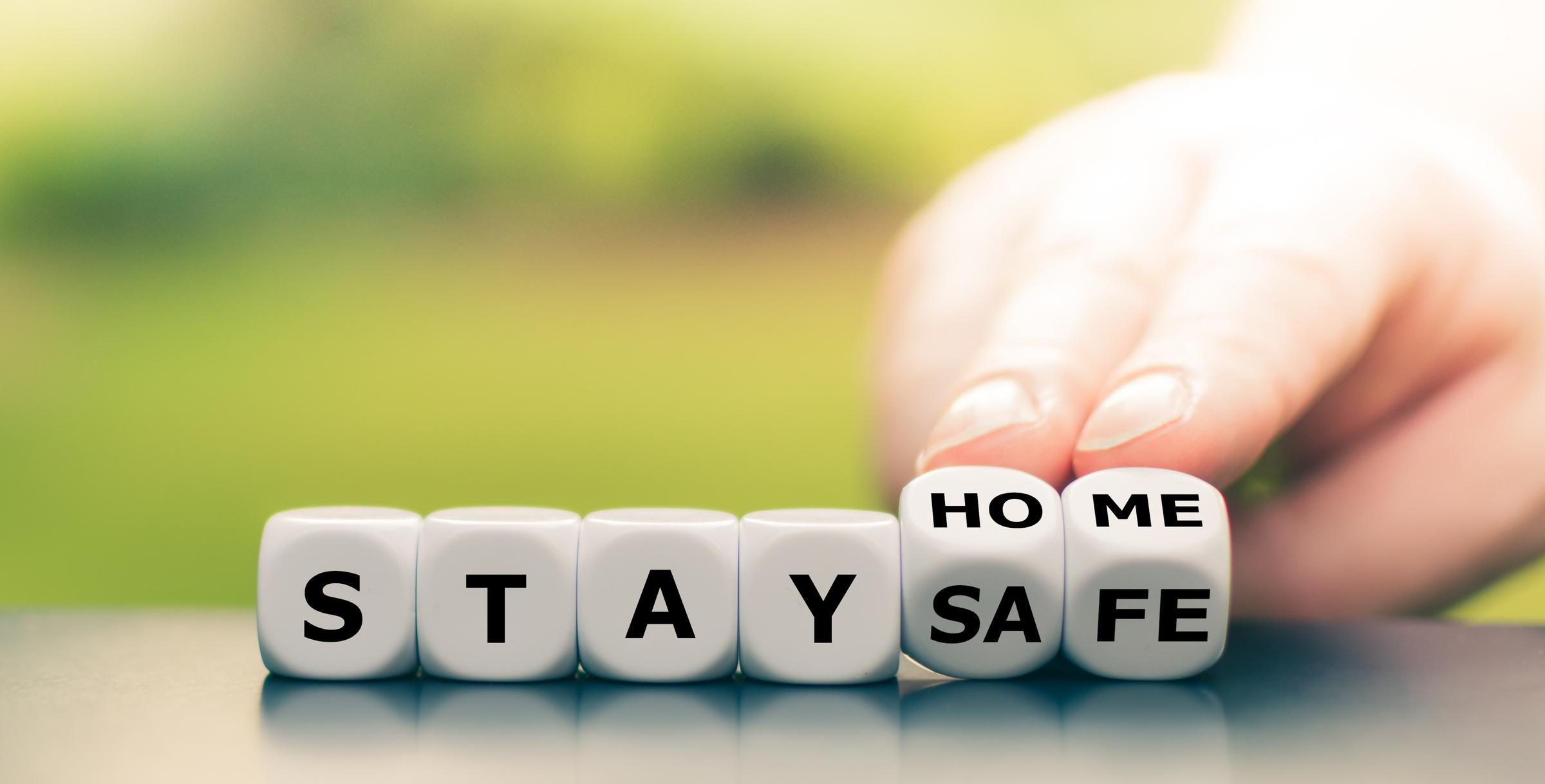
Complete lockdown, social distancing, hand hygiene and all the other guidelines proposed by the authorities will help us fight the extremely contagious Coronavirus. It’s all proven to be so good so far, but we need something more effective to reduce mortality and morbidity. With no vaccines or medications, how can we reduce mortality? The answer to this question is - lifestyle changes. Prehabilitation can be one effective alternative for the current scenario. It may help us combat the Coronavirus in a better way while we are confined indoors.
What Is Prehabilitation?
The term prehabilitation was coined during World War II to prepare the soldiers for the war front. It’s nothing but a preparation approach that is designed to increase the functional capacity of a human. It involves nutrition, hygiene, physical training, and exercise.
We too need to prepare ourselves along these lines to be able to fight this pandemic.
Being Physically Fit
Physical fitness is something that all of us need to maintain in the current pandemic situation. Physical activity is a must for all, and we must remain active even while we are restricted indoors. It might sound bizarre, but engaging in household chores like cleaning, dusting, mopping, gardening, etc. will help you stay fit and burn calories. Combine your regular chores with yoga exercises like surya-namaskar, pranayama or any other form for better results.
Meditation during these times will boost your mental and psychological strength, which in turn will help your Immune System grow stronger and prevent disease.
Eating Healthy
Good nutrition is important for good health. We must be careful about what we eat and must maintain good eating habits during the lockdown period. With the following simple diet alterations, you can take care of your health.
- Avoid Unnecessary Calories: Cut down on junk food, deep-fried items, chips, bakery items, cold drinks, salty food and sugary items.
- Increase Protein Intake: Vegetarians can opt for dal, legumes, chickpeas, rajma, beans, sprouts, paneer, cheese, milk, curd, buttermilk, etc. And non-vegetarians can opt for eggs, fish, and chicken along with all the vegetarian items.
- Increase Intake of Spices: Include spices like turmeric, cinnamon, garlic and ginger (powdered or in the root form) in your diet.
- Increase The Intake Of Healthy Food Items: Include nuts, seeds, and dry fruits in your diet. Snack on fresh fruits instead of junk food items.
- Stay Hydrated: Keep yourself hydrated with water and other healthy fluids like fresh fruit juice, etc.
- Quit Smoking: Give up on smoking, at least until the pandemic is over as smoking affects the lungs and the Coronavirus happens to have a predilection for the lungs.
- Medications: Do not skip any of your regular medications. Follow your doctor’s advice strictly.
Lockdown is inevitable and our best bet to contain the virus. It can get dull at home, but there are a lot of things that you can do. Use this time productively, do things that you wanted to, but never had the time for. Pursue new hobbies, read books, catch up with old friends, learn something, and just relax while you still can. Forget about everything that stresses you, just be with your family and relax.
Lastly, be positive. We are all in it together and we’ll get out of it together. Life will be normal soon enough.
Dr Manjusha Agarwal,
Consultant Internal Medicine, Gleneagles Hospital, Mumbai
Disclaimer: The views and opinions expressed in this article belong solely to the author. They do not reflect the opinions or views of the organisation.
World Parkinson's Disease Day
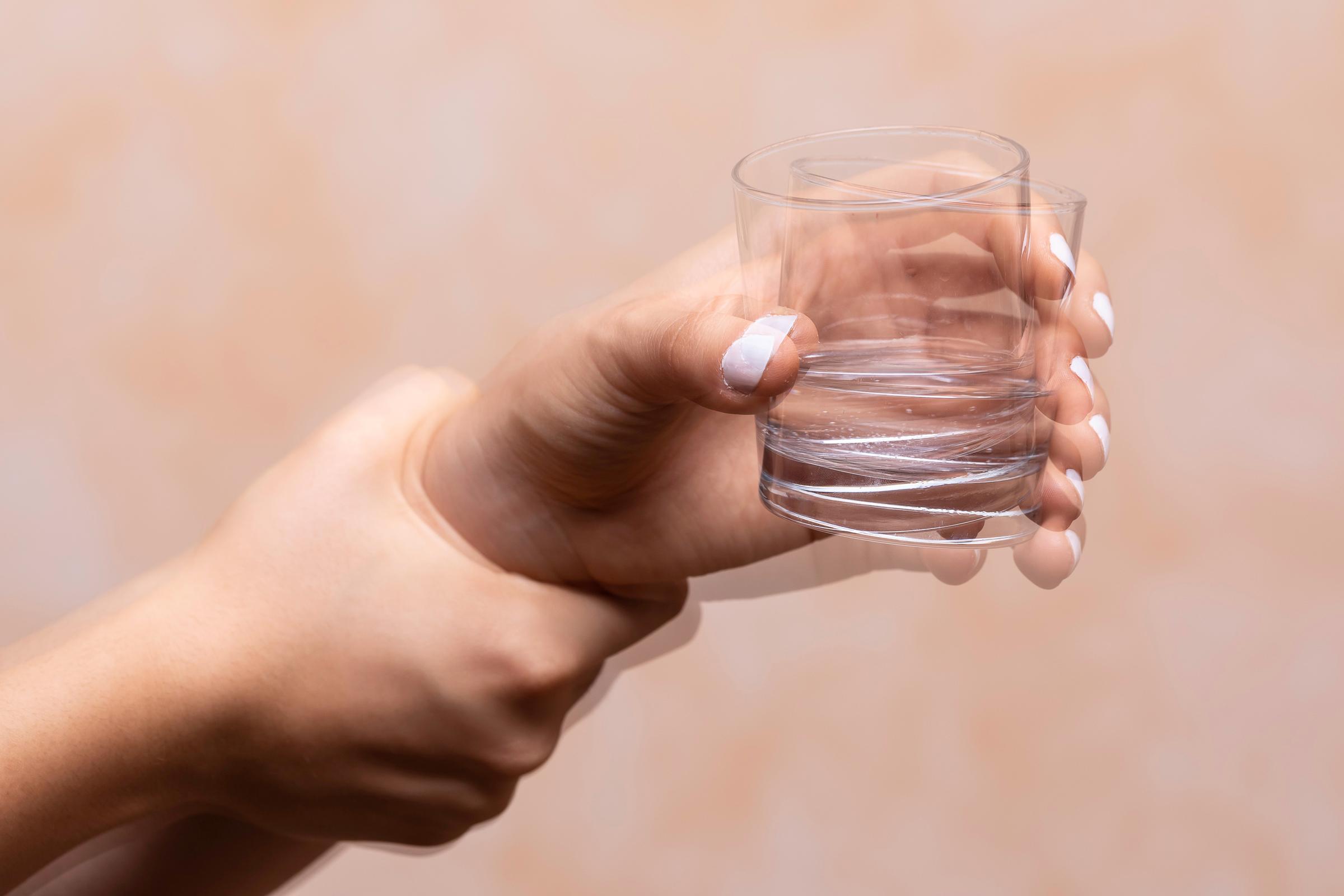
Are people with Parkinson’s Disease more at risk of catching COVID-19?
Parkinson’s Disease itself does not increase the risk of catching COVID-19. However, older adults are at the highest risk of developing a severe case of COVID-19, and because most patients with Parkinson’s Disease are typically older, they should take extra precautions to protect themselves.
Patients with Parkinson’s Disease should:
- Stock up on necessary medications and supplies that can last for a few weeks
- Avoid crowds and non-essential travel
- Stay at home as much as possible
- Older patients with Parkinson’s Disease should also consider getting vaccinated against pneumonia as COVID-19 infection may lead to Pneumonia, especially in the older population. They should consult their healthcare providers if they show any COVID-19-like symptoms
Advice for family members and caregivers
Family members and caregivers of people with chronic diseases such as Parkinson’s Disease should take appropriate precautions and take extra care. They should constantly monitor patients and try to minimize their trips outside to avoid the risk of getting in contact with the virus.
People who show symptoms of COVID-19 should avoid visiting their family members in nursing homes or other places until the self-isolation period is complete.
What should COVID-19-positive Parkinson’s patients do?
If doctors confirm that the patient has COVID-19, they should follow these steps to prevent the spread of the infection:
- Stay at home, preferably in a separate room not shared with others, and isolate yourself, except for getting medical care
- Avoid public areas and public transport
- Limit contact with pets and animals
- Avoid sharing personal items
- Cover coughs and sneezes with tissues and dispose of them properly
- Sanitize hands regularly
- Disinfect surfaces such as phones, keyboards, toilets and tables
- Patients should book their doctor appointment in advance. This way the hospital can take necessary steps to prevent the spread of the infection
- They should wear face masks when going out. The WHO has resources explaining the proper use of a face mask
What tests are available?
Many tests for the detection of COVID-19 have been made available under the FDA’s emergency use authorization, including rapid tests that are being developed to detect the presence of the virus within minutes.
The Foundation for Innovative New Diagnostics provides an up-to-date list of different manual and automated tests that are available or currently in development.
Is there a treatment?
There are currently no vaccines available for COVID-19. This makes the prevention and containment of the virus very important.
Oxygen Therapy is the major treatment intervention for patients with severe disease. Mechanical ventilation may be necessary in cases of respiratory failure.
Are there new treatments in the pipeline?
Several clinical trials have been launched or are being planned to test a variety of potential treatments and vaccines for COVID-19.
Anxiety is a common symptom for people with Parkinson’s Disease. It is an uneasiness/nervousness over impending/anticipated illness and can lead to an abnormal and overwhelming sense of fear. In these times, anxiety surrounds us. A chronic disease such as Parkinson's can elevate anxiety above and beyond what you may normally experience.
Since the emergence of COVID-19, it's been drilled into our heads that we need to wash our hands excessively, avoid crowds, and when possible, curtail travelling. This is great for keeping us from getting the virus, but what about keeping our minds healthy? You can't wash your Brain excessively, so what can you do?
Top advice for people with Parkinson's who ask about tips for optimal health usually goes in this order
- Find a Movement Disorder specialist doctor and build out your care team with a nurse physiotherapist and home helper
- Get your medications in stock and then take them on time
- Exercise, exercise, exercise!
- Take care of your mind and find ways to lessen the stress and anxiety in your life. This is particularly important at this time. You may find ways to lessen anxiety through mindfulness activities or meditation. Each person will find their journey to finding peace and joy through good health
Dr Pankaj Agarwal
Senior Consultant Neurology and Head of Movement Disorders Clinic, In-Charge DBS Program, Gleneagles Hospital, Mumbai
Disclaimer: The views and opinions expressed in this article belong solely to the author. They do not reflect the opinions or views of the organisation.
What Exactly Causes Death After Being Infected With Coronavirus?
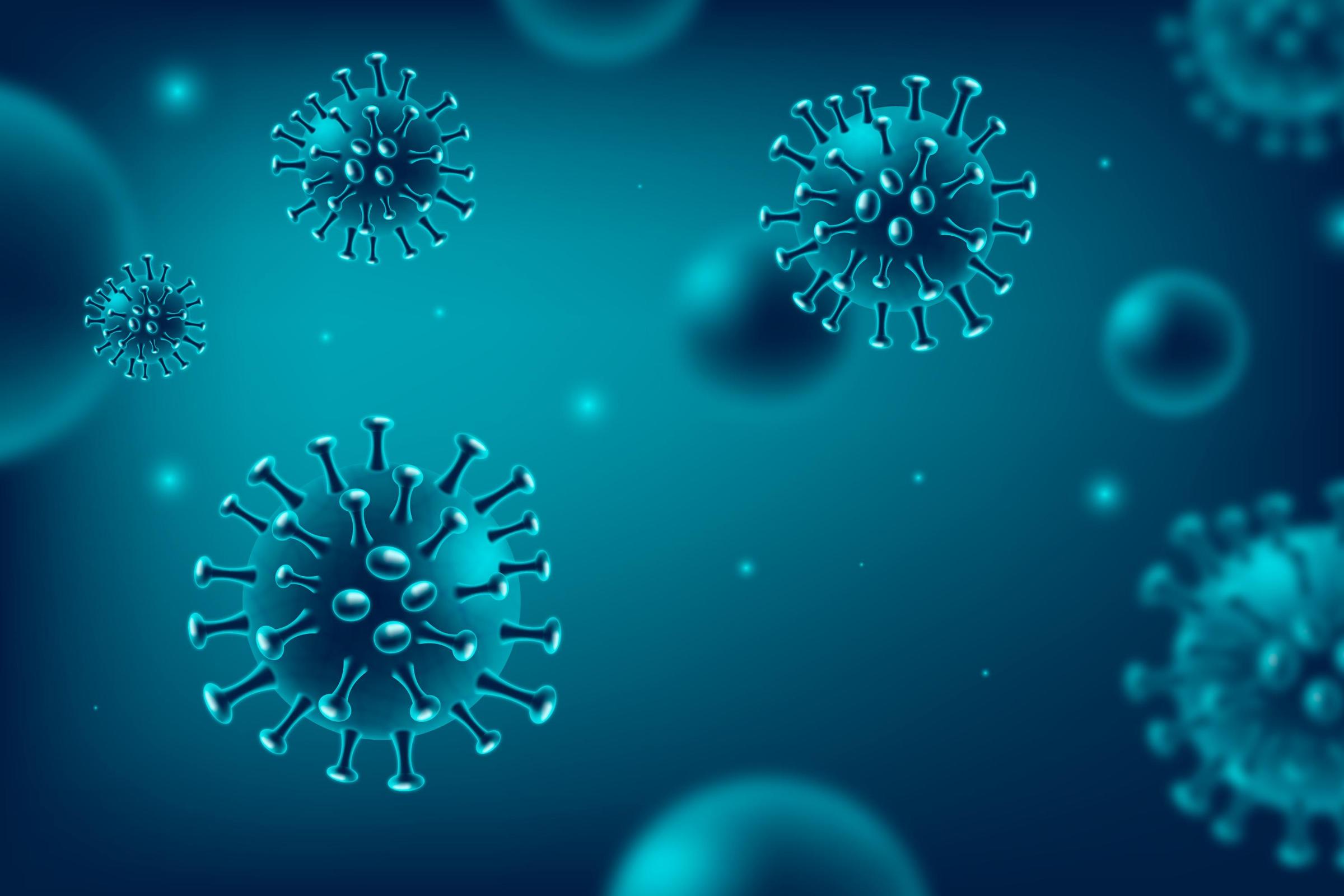
COVID-19 is rising like a demon that’s marching around the world and setting destruction. The death toll and the number of people being infected are increasing day by day. We do not have any vaccination or medication to treat this disease, nor do we have well-researched studies for anything as yet. All we have is first-hand experiences of doctors and health-care professionals who are dealing with these patients.
The death toll across the world due to COVID-19 has crossed one lakh now. The virus is said to be severe in the ones with low immunity and those with any underlying condition. Is low immunity what’s killing people who are infected with Coronavirus? There are a lot of aspects to be considered when it comes to mortality.
The major reasons for death in COVID-19 patients so far have been ARDS (Acute Respiratory Distress Syndrome) and Myocarditis.
ARDS is closely related to Pneumonia. There is inflammation in the Lungs. The person with this condition cannot breathe and has to be supported by a ventilator. If the swallowing goes away the conditions are stable and the person can survive. Since the Coronavirus affects the Lungs, the infected patients are highly susceptible to ARDS.
Another cause of death in patients affected by the Coronavirus is Myocarditis. It is an inflammation in the Heart muscles and affects your Heart’s electrical system, reducing its ability to pump and causing Arrhythmias (Rapid Abnormal Heart Rhythms). There are a few symptoms of COVID-19 that match with those of Myocarditis like - shortness of breath, fatigue, body and joint pain, fever, sore throat, and Diarrhoea. These symptoms could perhaps be because of the presence of Myocarditis, but since there are no studies yet, we cannot make a claim. However, the fact that Myocarditis is the cause of death in COVID-19 patients is true.
People with Heart conditions have weak immunity. When they show any symptoms indicating complications in their existing conditions, they are afraid to visit the hospital as they think they might get infected by the virus. They are hiding things from their families and doctors. This way they are putting themselves in more danger. So, I request that if you have any distress related to your condition or if you are showcasing any symptoms you think are related to COVID-19, please consult your doctor if you do not want to visit the hospital. It is for your safety.
Dr M Sai Sudhakar
Director - Cath lab Chief Interventional Cardiologist Chief Cardiac Transplant Physician, Gleneagles Hospital, Lakdikapul
Disclaimer: The views and opinions expressed in this article belong solely to the author. They do not reflect the opinions or views of the organisation.
Washing Feet Is Equally Important To Keep COVID-19 At Bay
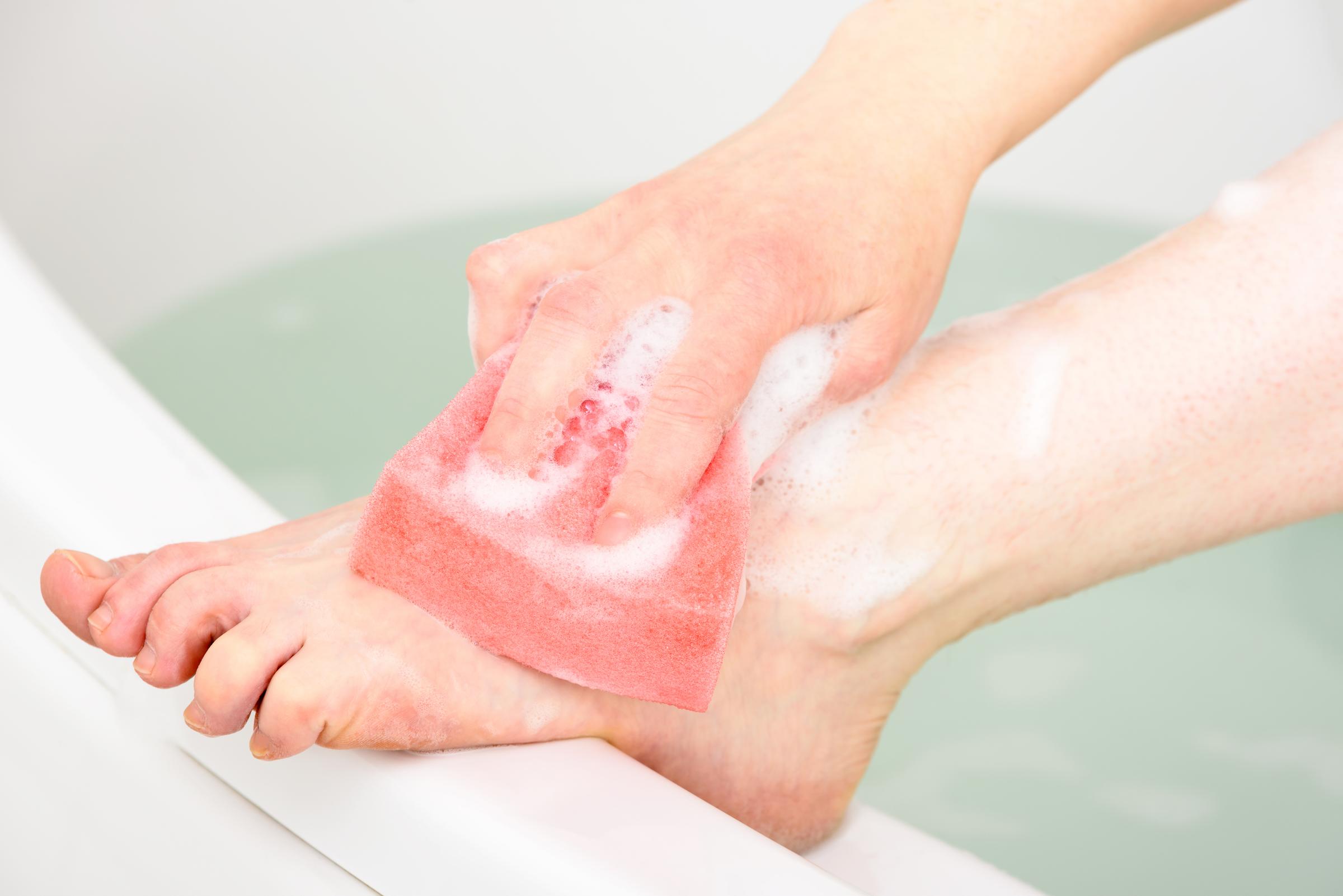
Coronavirus is spreading like a wildfire. The sooner we contain it the safer we are. The precautions given by the authorities may seem generic and simple, but they are highly effective, so abide by these measures to keep yourself and your loved ones safe.
The lockdown and the social distancing practice require all of us to stay indoors, but we do need to step out to buy groceries and other necessities. We wear our masks, make sure we don’t touch anything unnecessarily when we are out and after getting back home we wash our hands thoroughly, as suggested by the officials, and only then interact with our families. But is that enough? Are the hands the only source of contact? The answer is - no!
As much as our hands are exposed to the environment, so are our feet. You set out wearing sandals that expose your feet, and forget to wash them once you return. You must understand, that the virus is heavy and has a chance of falling and sticking to your feet if any infected person around you coughs or sneezes. Indians also tend to spit on the road, and if you step on it you can bring any infection with you. Therefore it is important to wash your hands as well as your feet.
My recommendation is to wash your feet before entering the house itself, but for those for whom this isn’t an option, you must enter your bathroom as soon as you get back home, then clean and disinfect the floor as well. Cleaning the floor is essential because if your feet, by any chance, are contaminated, the viruses stick to the floor and linger there for a while. At some point, you will be touching the floor. Say you are bored of sitting on the couch and decide to sit on the floor, or something falls and you pick it up. All these things increase the chances of you getting infected and all your previous precautionary measures go down the drain. Cleaning the floor becomes more important if you have kids in the house as they crawl and play on the floor. They often touch the ground and put their hands in their mouth, or the toys.
The ideal way of washing your feet is with hot water and soap. It’s simple and quick if you have a geyser, but if boiling water now and then is difficult, wash your feet thoroughly with water and soap. Keep only one pair of shoes for outdoor use and leave that pair outside the door. Do not, under any circumstances, bring it inside your home. Use the easy slip-on type of footwear that reduces your need to touch the footwear. If it’s a slip-on that exposes your feet minimally, it is the ideal and highly recommended type.
Dr Prashanth R Reddy,
Consultant ENT & Endoscopic Skull Base Surgeon, BGS Gleneagles Hospital
Disclaimer: The views and opinions expressed in this article belong solely to the author. They do not reflect the opinions or views of the organisation.
Understanding quarantine and isolation amid COVID-19

With the rapid increase in the number of cases of COVID-19 in India, the government has demanded all the citizens to be in self-quarantine, and practice social distancing and self-isolation. Many of us may be confused with all the havoc going around and now there is more to comprehend. What are these terms? What do they even mean? Why do they sound so important? And why are they being used so frequently?
All this can be overwhelming at first, but don’t worry, it’s not anything you need to be scared of, it’s just a practice that’ll help you from catching the virus and prevent it from further spreading. Here’s all you need to know about quarantine, isolation and social distancing.
What is Quarantine?
Quarantine is nothing but an effective way of protecting the general public. It’s a place or a period where people who have been exposed to any infectious disease are kept. The government of any nation uses quarantine to prevent the spread of any contagious disease, especially during outbreaks, epidemics, and pandemics. Quarantines are basically for people who may not show any kind of symptoms but were exposed to the disease somehow. It helps in preventing the risk of further spread of the virus or the disease.
What Is Isolation?
This is a different form of quarantine. You are isolated if you show symptoms of any infectious diseases. Precautions taken during isolation are more rigid. You are kept away from people so that nobody else catches the virus. There are special isolation wards in hospitals to host people with highly contagious diseases. Nobody except medical professionals is allowed on the premises of these isolation wards. The wards are closed and protected; the medical staff wears more protective gear to prevent any possibility of being exposed to any virus. This may sound scary, but it isn’t. It is for the protection of everybody else.
What Is Social Distancing?
Social distancing means avoiding large crowds, standing at a minimum distance of three feet from other people, and most importantly, staying home if you feel sick.
Amidst this coronavirus pandemic, businesses and companies across the world are practising this protocol. They have asked all of their employees to work from home. Schools, colleges, and universities across the world have been shut down for the same reason.
If you don’t show any symptoms or haven’t been exposed to the virus yet, you must practice social distancing. You must stay at home as much as possible. Avoid any kind of gathering - parties, weddings, reunions, even crowded places like markets, stations, crowded trains, etc. as much as possible. This will keep you from getting infected by the virus.
This sure is a tough time. All the information available is extremely overwhelming, and to add to the panic, these buzzwords are floating everywhere, but you don’t need to stress. Comply with the government’s requests, stay indoors, practice good hygiene and other preventive measures suggested by the government.
These measures may cause inconvenience, but please think about others as well. Try and stay calm, and don’t cause panic by forwarding wrong information around. Be careful of what you read and what you tell other people. Stick to credible sources for information. Lastly, please cooperate with the authorities. They are trying their best to fix this, all we need to do is cooperate, and soon, we may be out of this.
Dr Sumana Y
Consultant, Department of Wellness, BGS Gleneagles Hospital
Disclaimer: The views and opinions expressed in this article belong solely to the author. They do not reflect the opinions or views of the organization.
This Is How Patients with Respiratory Illnesses Should Take Care During the Lockdown

Are you suffering from any Respiratory problems? Then, it is time for you to stay safe and healthy by taking the necessary precautions. Here we list down things you must do to take care of your Lungs and keep them healthy.
Coronaviruses can be described as a large family of viruses that are commonly seen in people as well as animals. They cause Respiratory Diseases and in serious cases can lead to Pneumonia as well. The listed symptoms are fever, cough and shortness of breath. Coronavirus has become a matter of global concern as the entire world is reeling under it. There is also a steep rise in the number of patients suffering from Coronavirus in India. The current lockdown is to curb the spread of the infection.
People having comorbidities such as Diabetes, Heart conditions or any other diseases have been termed as ‘High-risk category,’ who may get sick due to Coronavirus. Likewise, those with Respiratory illnesses should also be extra cautious.
Follow these guidelines to keep your Lungs in top shape
- Wash your hands frequently with soap and water.
- Cover your mouth and nose while coughing or sneezing. You can cover it with the inside of your elbow if you are not carrying a handkerchief so that your palms are not soiled with secretions. Also, if you use tissues to cough or sneeze then dispose them of properly.
- Do not spit anywhere. If you see anyone doing it please educate them against it.
- The quarantine of a healthy person is to save others.
- The virus stays alive on metallic or other surfaces for more than a week and can spread by touching these surfaces. Thus, after touching such surfaces always wash your hands with soap and water. Avoid touching your face/mouth/nose with the same hands after touching surfaces to avoid transmission of the virus into your Respiratory system. Also, maintain social distancing at home and limit visitors at home. Avoid coming in contact with people who are sick.
- Keep your house clean and disinfect surfaces and items that you use at home.
- Take the medication prescribed by the doctor and see to it that you also stock them up.
- Do breathing exercises regularly. This can help clear mucus from the Lungs and also lowers the risk of a flare-up. Avoid dust, allergens and pollutants.
- Eat Lung-friendly foods: Swearing a healthy diet can be good for your Lungs. Eat apples, foods jam-packed with omega-3 fatty acids such as walnuts, and broccoli that are rich in antioxidants and good for the Lungs. Beans can help fight free radicals that tend to damage your Lungs. Likewise, berries are dense in antioxidants and helpful for your Lungs. Foods such as papaya, pineapple, kiwi, cabbage, carrots, turmeric and ginger can help strengthen the Immune System. Honey can help suppress the cough. Also, drink a lot of water as dry Lungs can lead to irritation.
- Exercise daily to maintain optimum weight and opt for relaxation techniques such as yoga or meditation.
- Steam helps break up mucus so you can expel it more easily. So, take it regularly and also gargle with salt water.
- Avoid smoking or second-hand smoke and wear a mask.
Dr Sameer Garde,
Pulmonologist, Gleneagles Hospital Mumbai
Disclaimer: The views and opinions expressed in this article belong solely to the author. They do not reflect the opinions or views of the organisation.
The Caring Touch of Nurses, Giving Hope at the End of Life
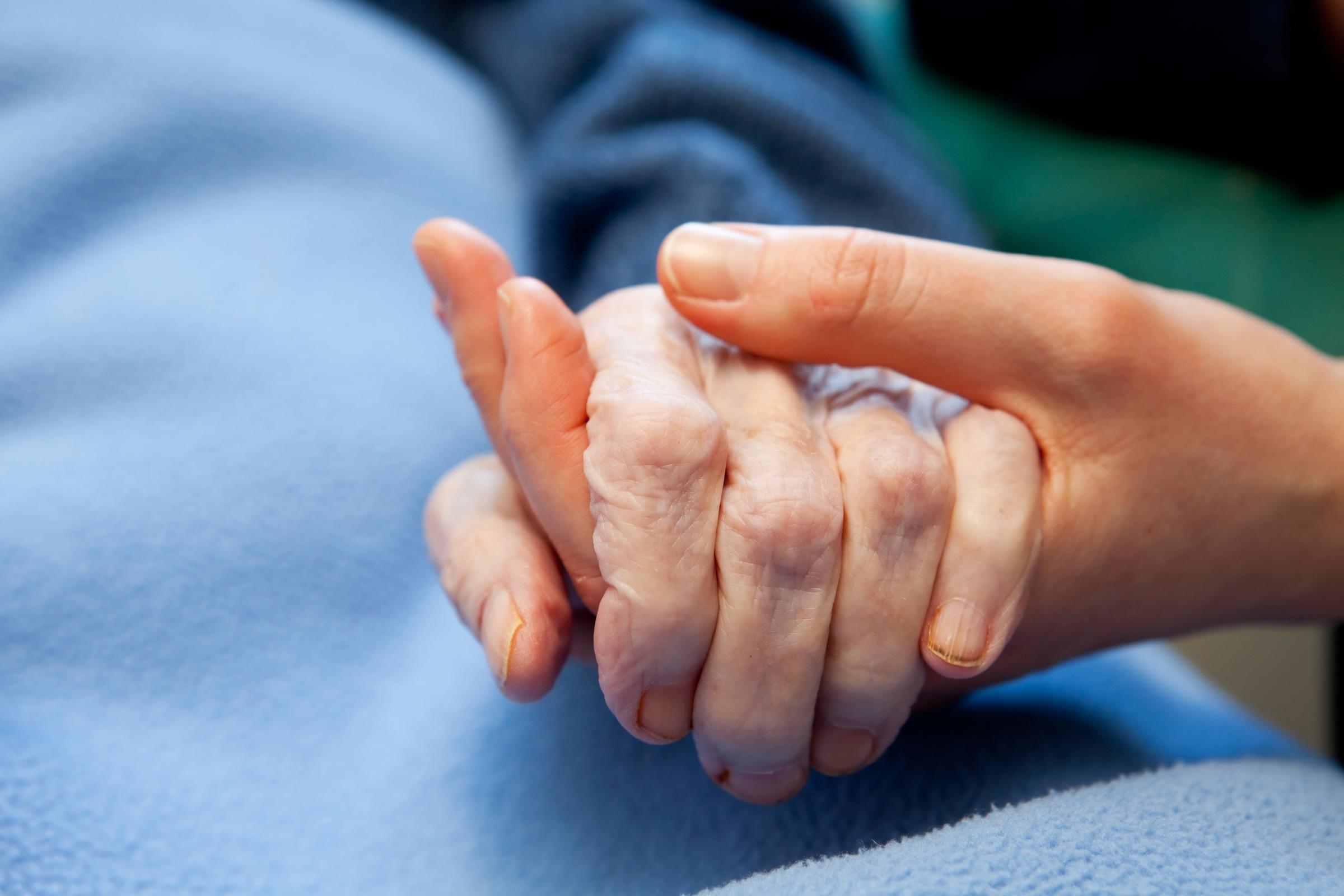
Dying is a universal human experience, but how we experience dying is shaped by a range of personal and sociocultural influences as well as by the availability of social and community support and access to quality healthcare systems of which nursing services are an essential component. The role of Nurses is to promote comfort, and dignity and to advocate for universal access to healthcare to patients, especially those who are terminal.
Palliative Care as a Human Right
Today, the World Health Organisation (WHO) acknowledges that Palliative Care (caring for terminal patients) is a human right and should be provided by adept medical staff and healthcare services that pay special attention to the individual's needs. However, it does come with its set of challenges such as:
- Each year, an estimated 40 million people need Palliative Care, 78% of them live in low and middle-income countries.
- Only around 14% of people who need Palliative Care currently receive it, across the globe. In India, it is down to 2%.
- Overly restrictive regulations for pain management drugs and other essential medicines deny access to adequate pain relief and Palliative Care.
- Lack of training and awareness among health professionals is a major barrier to improving access.
- The global need for Palliative Care will continue to grow as a result of the rising burden of non-communicable diseases (NCDs) and ageing populations.
- Timely care for terminal patients can help reduce unnecessary hospital visits and the use of health services.
Nurses: The key solution to these challenges
As the largest workforce in global and Indian healthcare, nurses are in a strategic position to influence the quality of Palliative Care delivery. Fundamentally, nursing has a holistic focus and emphasis on respect for the person’s dignity. Thanks to their personalised care, nurses deliver quality end-of-life care services to people. We delve further into that with these 3 points:
- Hope to live well for as long as possible
- Hope means different things to different people living with life-limiting conditions. For some, hope is linked to a desire to prolong life or for a medical cure, but this may not be clinically possible. Nursing interventions, directed at achieving these goals can play a critical role in enabling people to live well for as long as possible. Plus, it helps people focus on the positive and connect to others. This holistic, person-centred understanding of hope, one that focuses on living well with a life-limiting condition for as long as possible, aligns well with nursing philosophy and practice.
- Hope for universal access to quality Palliative Care
- Sociologist Alan Kellehear states, “It is not Cancer, Heart Disease or medical sciences that present modern dying with its greatest moral tests but rather it is poverty, ageing and social exclusion.” Nursing has great potential to address the challenges associated with social disadvantage through our compassion and reach into communities in need.
- However, one recent multi-country study highlighted that barriers like personnel shortages, lack of funding and policies, poor access to end-of-life or hospital services, and decreased community awareness do deter nurses from pursuing it further. In India, we must address these issues, since nursing services are the key to achieving universal access to quality Palliative Care, no matter what one’s social circumstances.
- Hope for a thriving, comprehensive, integrated system of care
- Even in countries where resources and evidence for Palliative Care exist, these services remain underutilized due to being over-medicalized and losing the human touch. Thus, in these countries and developing ones like India, nurses can voice their thoughts about the care being based on the needs and wishes of the person, their family and community. While there is a false belief that nurses are subordinate to doctors, they are indeed equals when it comes to giving a personal touch to the patients. Hence, they can advocate for individual and community voices to be heard in the care process.
- By contributing to almost every aspect of Palliative Care, holistically, nurses provide hope that our systems will shift to meet the growing demand for these services across the world.
Ms Prameela Korampalli
Chief Nursing Officer, Aware Gleneagles Hospital, LB Nagar, Hyderabad
&
Ms Felicita,
Chief Nursing Officer, Gleneagles Hospital, Lakdikapul, Hyderabad
Disclaimer: The views and opinions expressed in this article belong solely to the author. They do not reflect the opinions or views of the organisation.







